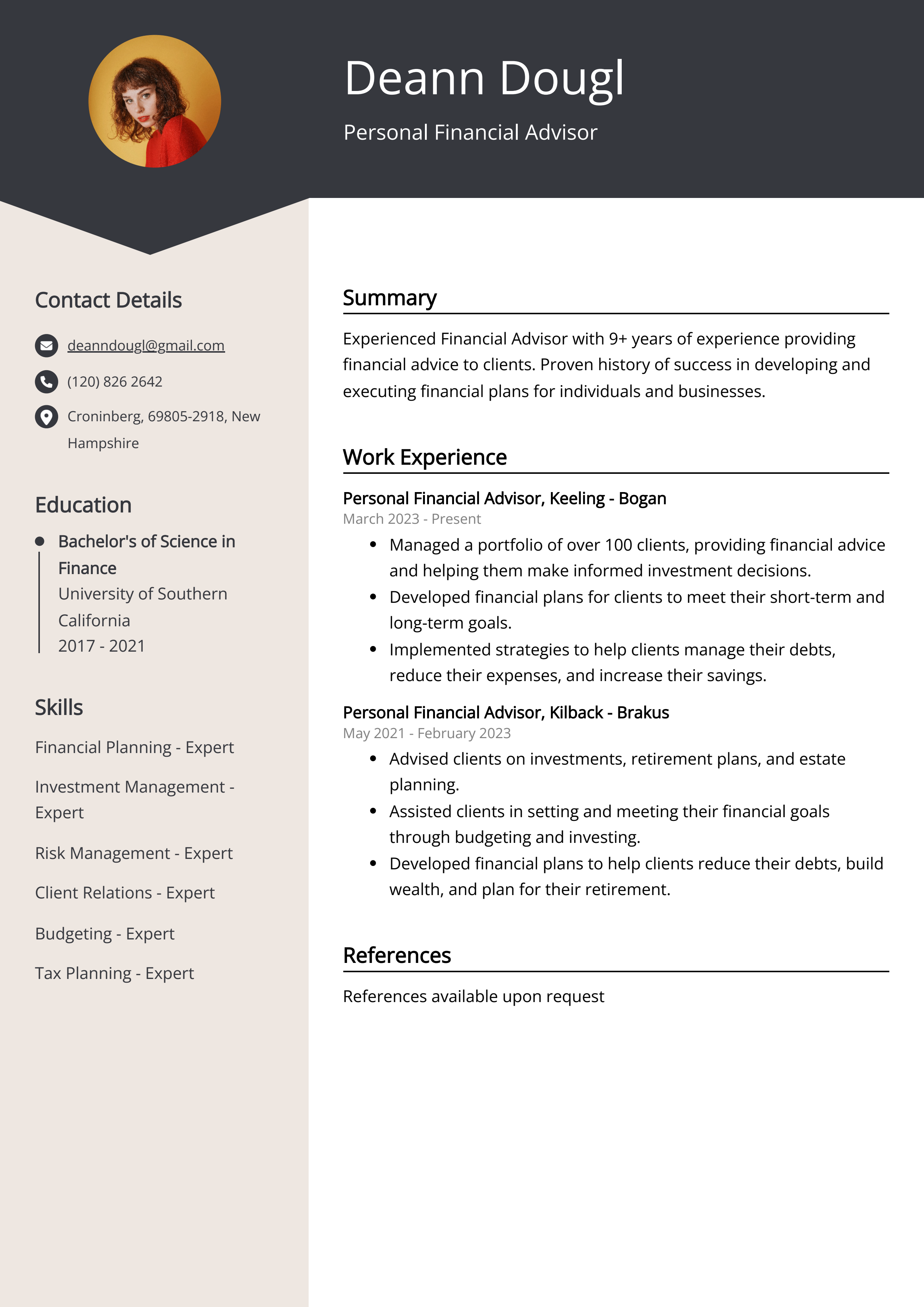To get personal finance clients, build a strong online presence and network effectively. Offer valuable content and personalized services.
Personal finance professionals must attract clients to succeed. A robust online presence is essential for visibility and credibility. Utilize social media platforms, a professional website, and SEO techniques to increase online reach. Networking, both online and offline, helps in building relationships and trust.
Attending industry events, joining relevant groups, and engaging in community activities can expand your client base. Offering valuable content, such as blogs, webinars, and free consultations, showcases your expertise and draws potential clients. Providing personalized services tailored to individual needs ensures client satisfaction and retention. This comprehensive strategy helps in consistently attracting and retaining personal finance clients.

Credit: emilybinder.com
Identifying Target Clients
Finding the right clients is crucial for any personal finance advisor. Knowing who to target helps you tailor your services. It also ensures your marketing efforts are effective. This section will guide you through identifying your target clients.
Defining Ideal Client Profile
Start by defining your ideal client profile. This involves understanding the characteristics of your perfect client. Ask yourself questions like:
- What age group do they belong to?
- What is their income level?
- Do they have specific financial goals?
- Are they employed or self-employed?
Creating a detailed profile helps in developing targeted strategies. Below is an example of a client profile:
| Attribute | Description |
|---|---|
| Age | 30-45 years |
| Income Level | $50,000 – $100,000 annually |
| Goals | Saving for retirement, buying a home |
| Employment Status | Full-time employed |
Market Research Techniques
Conducting market research helps to find where your ideal clients are. Here are some effective market research techniques:
- Surveys: Create surveys to gather data on potential clients.
- Social Media Analysis: Check social media trends and discussions.
- Competitor Analysis: Study your competitors’ client base.
- Focus Groups: Organize focus groups to get detailed insights.
These techniques provide valuable information. Use this data to fine-tune your client acquisition strategies.

Credit: www.moneyhub.com
Building A Strong Online Presence
Building a strong online presence is crucial for attracting personal finance clients. A professional website and active social media presence can make a significant impact. These tools help you reach a wider audience and establish credibility.
Creating A Professional Website
Your website is your digital storefront. It should look professional and be user-friendly. Here are some key elements:
- Clean Design: A clean design makes your site easy to navigate.
- Clear Messaging: Clearly state what services you offer.
- Contact Information: Make it easy for clients to contact you.
- Testimonials: Include reviews from satisfied clients.
Use high-quality images and ensure your site loads quickly. A slow site can deter potential clients. Always keep your website updated with the latest information.
Utilizing Social Media
Social media is a powerful tool for reaching potential clients. Different platforms serve different purposes. Here’s a quick guide:
| Platform | Purpose |
|---|---|
| Great for sharing articles and engaging with a community. | |
| Perfect for professional networking and sharing your expertise. | |
| Ideal for quick updates and industry news. |
Post regularly to keep your audience engaged. Use a mix of content types: text, images, and videos. Engage with your followers by responding to comments and messages. This builds trust and shows you’re approachable.
By creating a professional website and leveraging social media, you can attract more personal finance clients. Consistency and engagement are key to building a strong online presence.
Networking Strategies
Networking is key to growing your personal finance client base. By connecting with professionals, you can build trust and credibility. Below are effective networking strategies to help you succeed.
Joining Professional Associations
Join professional associations related to finance. These groups provide excellent networking opportunities. They host events and offer resources for members.
- Financial Planning Association (FPA): A great place to meet peers.
- National Association of Personal Financial Advisors (NAPFA): Offers many networking events.
- Chartered Financial Analyst (CFA) Institute: Connect with highly skilled professionals.
Being part of these groups boosts your credibility. Clients trust those associated with reputable organizations.
Attending Industry Events
Attend industry events to meet potential clients. These events are great for networking and learning.
- Conferences: Large gatherings where you can meet many professionals.
- Workshops: Smaller settings that allow for deeper connections.
- Seminars: Focus on specific topics, attracting interested clients.
Prepare well before attending. Bring business cards and have your elevator pitch ready. Follow up with people you meet to build lasting relationships.

Credit: resumaker.ai
Leveraging Referrals
Leveraging referrals can significantly boost your personal finance client base. Happy clients can bring in more clients. Referrals are powerful because they come with trust built-in.
Encouraging Client Referrals
Happy clients are your best marketers. Encourage them to refer their friends and family. Make it easy for them to do so.
Offer incentives. A small discount on future services works well. You can also offer a small gift or reward. This makes clients more likely to refer you.
Ask for referrals at the right time. Right after a successful service is ideal. Clients are most satisfied then. They will be more willing to refer you.
Follow up with referred clients. Make them feel special. Give them personalized attention. This increases the chances of them becoming long-term clients.
Partnering With Other Professionals
Collaborate with other professionals. Partnering with accountants, lawyers, and real estate agents can be beneficial. They have clients who may need your services.
Build relationships with these professionals. Attend networking events. Join local business groups. This can open doors to many referral opportunities.
Offer to provide value to their clients. Give free seminars or workshops. Share your expertise. This builds trust and showcases your skills.
Make it a win-win situation. Refer your clients to them too. This builds a strong referral network. Everyone benefits in this arrangement.
| Action | Benefit |
|---|---|
| Offer Incentives | Increases likelihood of referrals |
| Follow Up | Enhances client relationship |
| Collaborate with Professionals | Expands referral network |
- Encourage referrals at the right time.
- Offer small rewards to clients.
- Partner with related professionals.
- Build a strong referral network.
Content Marketing

Content marketing is a powerful tool. It helps attract personal finance clients. Creating valuable content builds trust with your audience. This approach also positions you as an expert in your field.
Writing Informative Blog Posts
Blog posts are a great way to share knowledge. Write about topics like budgeting, saving, and investing. Use simple language so everyone can understand.
- Focus on keywords: Use relevant keywords to improve SEO.
- Include examples: Real-life examples make concepts easier to grasp.
- Use headings: Break content into sections for better readability.
| Topic | Keyword |
|---|---|
| Budgeting Tips | budgeting |
| How to Save Money | saving money |
| Investing for Beginners | investing |
Creating Educational Videos
Videos are engaging and easy to consume. They can explain complex topics quickly. Create short videos on personal finance tips.
- Plan your content: Outline what you will cover.
- Be clear and concise: Use simple terms and avoid jargon.
- Use visuals: Charts and graphs help explain data.
Post these videos on platforms like YouTube. Share them on your social media channels. This increases visibility and attracts more clients.
Offering Free Workshops
Providing free workshops can attract personal finance clients. Workshops establish trust and showcase your expertise. Here’s how to plan and promote them effectively.
Planning Educational Sessions
Start by identifying common financial issues people face. This can include budgeting, saving, investing, or debt management. Create a detailed outline for each session. Ensure each topic is easy to understand. Break information into small, digestible chunks.
Use visual aids to enhance understanding. PowerPoint slides, charts, and graphs can be very helpful. Interactive elements like Q&A sessions keep attendees engaged. Provide handouts or digital resources for further reading.
Choose a convenient location for your workshop. Libraries, community centers, or coworking spaces are great options. Consider offering virtual workshops using platforms like Zoom. This widens your reach and accommodates more attendees.
Promoting Workshops Effectively
Effective promotion ensures a good turnout. Use social media to spread the word. Create event pages on Facebook and LinkedIn. Share posts and updates regularly. Encourage your followers to share the event with their networks.
Email marketing is another powerful tool. Send out invites to your mailing list. Highlight the benefits of attending your workshop. Include a clear call-to-action with registration details.
Partner with local businesses and organizations. They can help promote your workshop to their customers. This increases your reach and credibility. Use flyers and posters in high-traffic areas. Local cafes, libraries, and bulletin boards are ideal spots.
Offer incentives to attract more participants. Free eBooks, discount vouchers, or a free consultation can be great motivators. Ensure your workshop details are clear and concise. This makes it easy for people to understand and register.
Utilizing Email Marketing
Utilizing Email Marketing is a powerful way to get personal finance clients. It allows you to connect directly with potential clients. By sending targeted messages, you can build trust and showcase your expertise.
Building An Email List
Building an email list is the first step in email marketing. You need a list of people interested in personal finance. Start by creating a signup form on your website. Offer something valuable in exchange for their email.
- Free eBook about budgeting tips
- Exclusive financial planning webinars
- Monthly newsletters with financial advice
Promote your signup form on social media platforms. Encourage your current clients to refer others. Use paid ads to reach a wider audience. Remember, the goal is to attract people who need your services.
Crafting Engaging Newsletters
Crafting engaging newsletters helps you stay connected with your audience. Your newsletter should provide value and keep readers interested. Start with a catchy subject line to grab attention.
Include a mix of content in your newsletters:
| Content Type | Examples |
|---|---|
| Educational Articles | Tips on saving money, investing, and budgeting |
| Client Success Stories | Case studies showcasing how you helped a client |
| Personal Touch | Share your journey and experiences |
Use visuals like images and infographics to make your newsletter attractive. End with a call-to-action encouraging readers to book a consultation. Regularly update your content to keep it fresh and engaging. This builds trust and positions you as an expert.
Tracking And Analyzing Results
Tracking and analyzing results are crucial steps in gaining personal finance clients. Understanding what works and what doesn’t can help you refine your approach. This will lead to more effective client acquisition strategies.
Using Analytics Tools
Using analytics tools can provide valuable insights into your marketing efforts. Tools like Google Analytics, HubSpot, and SEMrush can track key metrics. These metrics include website traffic, user behavior, and conversion rates.
- Google Analytics: Tracks website traffic and user behavior.
- HubSpot: Manages client interactions and tracks conversions.
- SEMrush: Analyzes SEO performance and competitive positioning.
By using these tools, you can identify which strategies bring the most clients. You can also see where improvements are needed.
Adjusting Strategies Based On Data
Adjusting strategies based on data ensures you are making informed decisions. Start by looking at the metrics from your analytics tools.
- Identify high-performing content.
- Recognize underperforming strategies.
- Make data-driven adjustments.
For example, if blog posts about budgeting are popular, create more content on budgeting. If social media ads are not converting, re-evaluate your ad copy and targeting.
Regularly reviewing and adjusting your strategies based on data will help you attract more personal finance clients. This approach keeps your marketing efforts efficient and effective.
Frequently Asked Questions
How Do I Get Private Wealth Clients?
Network with high-net-worth individuals. Offer personalized financial solutions. Leverage referrals from existing clients. Join exclusive industry events. Showcase expertise through content marketing.
How To Get Clients As An Ifa?
To get clients as an IFA, network actively, offer free consultations, use social media, build a strong online presence, and get client referrals.
How Do I Start A Personal Finance Business?
To start a personal finance business, create a solid business plan. Obtain necessary licenses and certifications. Build a professional website. Network with potential clients and industry professionals. Offer valuable, personalized financial advice.
How To Recruit Financial Advisors?
Recruit financial advisors by posting job ads on industry-specific job boards. Use social media to reach potential candidates. Network at industry events. Offer competitive salaries and benefits. Conduct thorough interviews to ensure the right fit.
Conclusion
Building a solid client base in personal finance takes dedication. Leverage social media and provide valuable content consistently. Network actively and offer free consultations to establish trust. Always prioritize your clients’ needs to foster loyalty and referrals. With these strategies, your client list will grow steadily.

